Roof Restoration
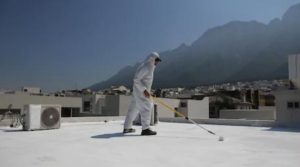 From crackling heat to colossal downpours, our roofs take a beating all year long. If your roof is starting to show its age, you may be thinking about a roof replacement. However, replacing your roof isn’t the only option available to you. You can take steps to protect the lifespan of your roof and repair the damage that already exists.
From crackling heat to colossal downpours, our roofs take a beating all year long. If your roof is starting to show its age, you may be thinking about a roof replacement. However, replacing your roof isn’t the only option available to you. You can take steps to protect the lifespan of your roof and repair the damage that already exists.
What is roof restoration? How does it work? Why is a restoration roofing system a popular choice for homeowners and businesses? What are the benefits of restoring a roof versus replacing it? Are all roof coatings the same?
This article will help answer these questions and more.
What Is Roof Restoration?
Roof restoration is defined as the process of using a highly engineered coating that repairs the damage and prevents future damages caused by the elements. A roof restoration system allows the property owner to cut costs, reduce the environmental impact, and extend the longevity of the existing roof.
What Is Roof Coating?
If you want to prolong the life of your roof, you should consider a roof coating. Roof coatings were designed as a preventive measure to protect roofs from damage and leaks. While many homeowners focus on the eventuality that they will need to replace or repair their roof, a roof coating may be a better alternative. Roof coating technology is available in silicone, acrylic, and aluminum.
What are the differences and benefits of these three types of roof coatings? How can you determine which one is best for your roof?
Silicone Roof Coating
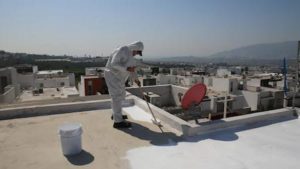 One of the best roof coating options available is a silicone roof coating system. What is silicon coating? How does it work? What are the benefits of applying a roof coating to your roof?
One of the best roof coating options available is a silicone roof coating system. What is silicon coating? How does it work? What are the benefits of applying a roof coating to your roof?
Silicone is a high-performance polymer that aids in protecting a roof from UV damage, leaking, and other weathering effects. A silicone roof coating is a single layer of silicone rolled or sprayed on a roof to repair blisters, cracks, or seams. Silicone coatings are most often applied to a flat or low-sloped roof, making it an ideal roof coating for residential properties and commercial buildings.
This high solids protective layer does not increase the roof’s installation or inbuilt system. However, if you want to protect your roof from the elements, a silicone roof coating is the ideal choice.
High-Solid Silicone
High-solid silicone (HS silicone) means that the coating has more silicone per gallon left over on the roof after the coating cures. The thickness of silicone is important to a contractor because it directly relates to a roof’s longevity. The thickness of the cured layer of silicone also determines what type of warranty can be applied to the roof and the work performed during the restoration.
High solid silicone is also the best choice for a single-layer application process. If your roofing restoration includes fees associated with materials, a high solid silicone means that a contractor will use fewer materials due to the single-coat process.
Low-Solid Silicone
Low-solid or standard silicone (SS silicone) is the opposite of high-solid silicone coatings. Because standard silicone has less silicone per gallon, a contractor often uses more layers to reach the desired effect. Standard silicone is prone to pinholes and mug cracks. These imperfections may seem like small issues when the roof is newly restored, but they can lead to larger problems as time passes.
If you choose a silicone roof to meet your restoration needs, make sure your contractor uses high-solid silicone to protect your roof and save you money.
Benefits of Silicone Roof Coating
There are several cost-saving benefits to a silicone roof coating. The silicone coating creates a smooth, waterproof layer that reflects UV light and resists even the most forceful monsoon. Silicone roof systems also hold up in both high and low temperatures. Another benefit to using a roof coating is that there is zero construction involved in the process. The coasting is placed over the existing roof.
Acrylic Roof Coating
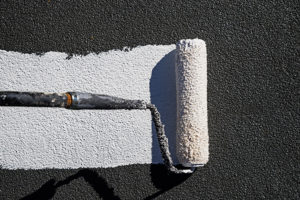 Acrylic roof coating is a polymer specifically designed to coat roofs. Often called an “acrylic elastomeric roof coating. This name refers to a “liquid applied, monolithic (seamless), fully adhered, elastomeric membrane that formed in situ on the roof.”
Acrylic roof coating is a polymer specifically designed to coat roofs. Often called an “acrylic elastomeric roof coating. This name refers to a “liquid applied, monolithic (seamless), fully adhered, elastomeric membrane that formed in situ on the roof.”
It is important to note that the elastomeric membrane is not the same as caulk or sealant. While caulking and sealant can adapt to some of the conditions on a roof, they are not equipped to withstand water, UV light, or those harsh elements.
The acrylic coating is 5 to 10 times thicker than house paint and not as brittle. This type of coating is usually white in color. While an acrylic coating may look similar to paint, its benefits are very different.
An acrylic roof coating is applied as a liquid that hardens as it dries.
Benefits of Acrylic Roof Coating
The white hue of an acrylic coating reflects light and repels heat, blocking as much as 85% of the heat from entering the building. This protection represents huge cost savings in air conditioning and UV damage to the existing roof.
Acrylic roof restoration systems can also protect the existing roof from water damage and restore the look and longevity of a roof’s performance. These roof systems are also fire resistant.
As homeowners and commercial building managers look for ways to lower costs and be more sustainable, they often find that acrylic roofing technology helps them reduce their energy consumption.
Aluminum Roof Coating
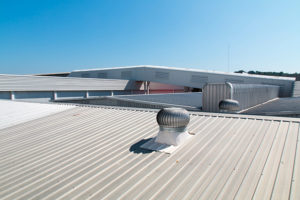 Aluminum roof coatings are solvent-based mixed with asphalt, aluminum paste, moisture scavenger, fillers, and hydrocarbon solvents.
Aluminum roof coatings are solvent-based mixed with asphalt, aluminum paste, moisture scavenger, fillers, and hydrocarbon solvents.
Unlike acrylic coatings, aluminum coatings are not waterproof. While they provide some protection from UV light, they fail to improve the mil thickness of the roof.
Contractors have found that because aluminum restoration systems contain asphalt and other chemicals containing volatile organic content (VOCs), there is an unpleasant and potentially harmful odor released when the coating is applied.
An aluminum roof coating is slowly poured and spread over the surface of the roof.
Benefits of Aluminum Roof Coating
While it is true that aluminum coating provides a highly reflective surface that increases its ability to reduce heat and the effects of UV damage to the roof, there is a clear downside to this type of roof restoration. The aluminum coating cannot interact with waterborne materials, such as acrylic, in the future. This restriction cuts down on its sustainable properties and increases the likelihood that the next time someone works on your roof, they will need to replace it.
Aluminum roof coatings are difficult to clean, hard to warranty, and powerless against rain. Before choosing an aluminum roof coating, contact a roofing professional to discuss the pros and cons of this restoration system.
Which Choice Is Best for Me?
When considering which roof restoration system is right for your home or commercial building, there are a few things to keep in mind.
- Do I really need to replace my roof?
- What restoration type best fits my roof slope?
- Is the coating waterproof?
- Does the coating protect against UV damage?
- Will the coating I choose lower my expenses?
- Is there health or environmental risks I should consider?
- How will the coating increase the resell value of the home?
Conclusion
The best way to determine which roof restoration option is best for your needs is to talk to a professional roofer. A contractor with years of experience can help you decide how to repair the roof you have and restore its performance.
Before you consider replacing your roof, remember that a roof restoration system is not only a more economical choice upfront, but it can also help you lower your electric and heating bill. If you want to save money and reduce your impact on the environment, a roof coating can help you accomplish that goal.
![]() Pamblanco Painting Contractors is a family-owned and operated residential and commercial painting business and has been providing painting and roof coating services since 1993. Get your free quote today!
Pamblanco Painting Contractors is a family-owned and operated residential and commercial painting business and has been providing painting and roof coating services since 1993. Get your free quote today!

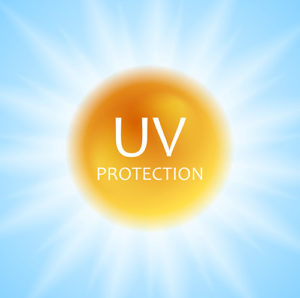 Acrylic coatings offer protection from UV light; pounding water; inclement weather like snow or wind; and much more! In addition to shielding roofing materials from elements that can decrease the roof’s lifespan, acrylic coatings can also repair damage.
Acrylic coatings offer protection from UV light; pounding water; inclement weather like snow or wind; and much more! In addition to shielding roofing materials from elements that can decrease the roof’s lifespan, acrylic coatings can also repair damage. There are several cost-saving benefits to a silicone roof coating. The coating creates a smooth, waterproof layer that reflects UV light and resists even the most forceful monsoon. Silicone roof systems also hold up in both high and cold temperatures. Another benefit to using a roof coating is that there is zero construction involved in the process. The coasting is placed over the existing roof.
There are several cost-saving benefits to a silicone roof coating. The coating creates a smooth, waterproof layer that reflects UV light and resists even the most forceful monsoon. Silicone roof systems also hold up in both high and cold temperatures. Another benefit to using a roof coating is that there is zero construction involved in the process. The coasting is placed over the existing roof.